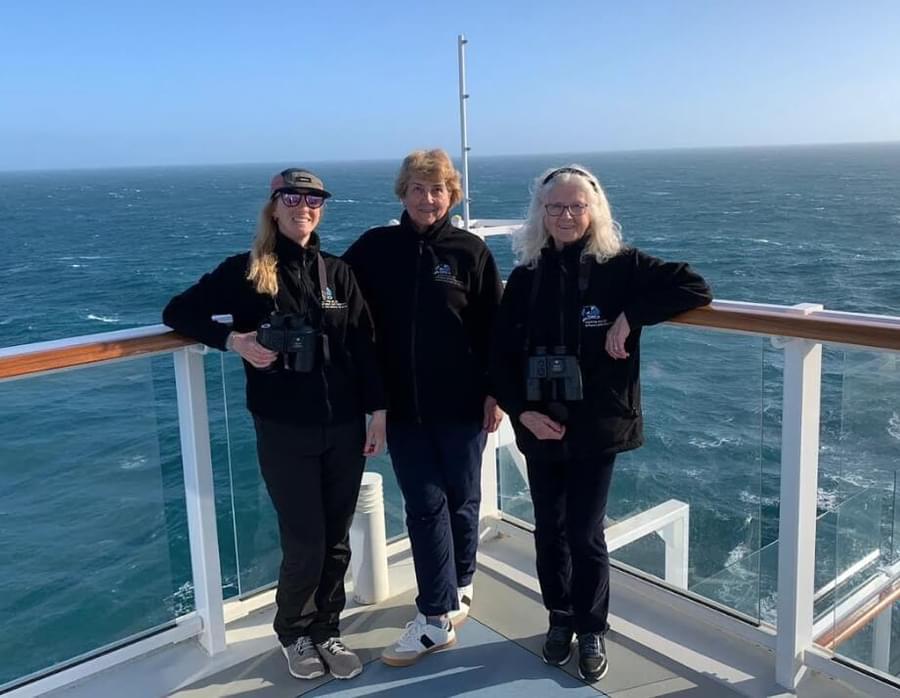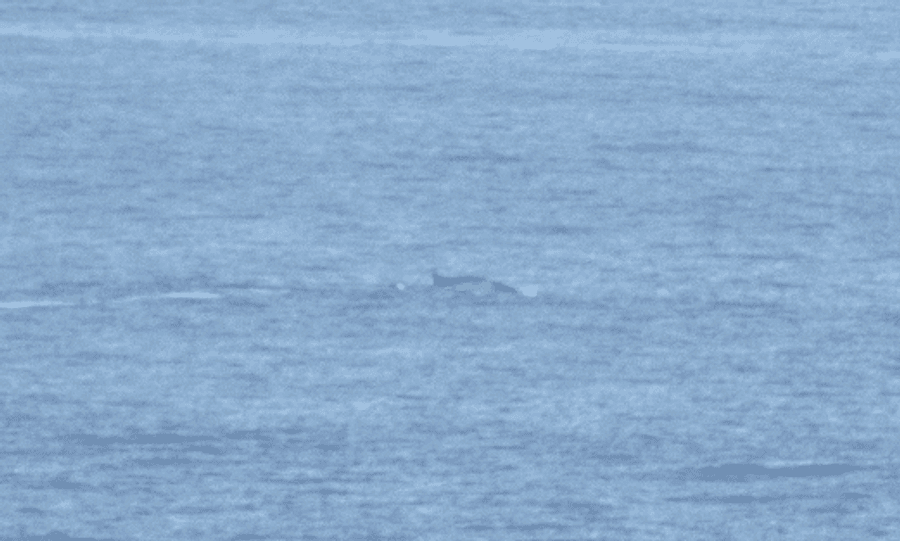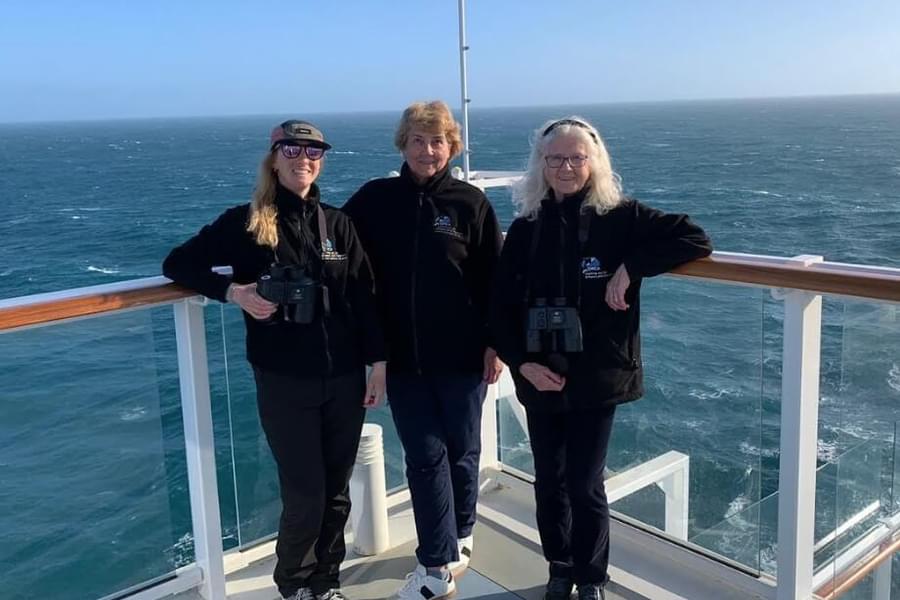Since 2007, teams of dedicated ORCA volunteer Marine Mammal Surveyors have been invited on board Saga cruise ships to provide guests with incredible wildlife experiences through delivering presentations, running deck-watches, and generally being on hand to talk about any wildlife seen on the trips. ORCA Marine Mammal Surveyors collect vital data on the whales and dolphins they see during these trips, whilst being out on deck to help guests to spot and identify the marine life they are seeing for themselves (you can read more about ORCA's work with Saga here).
This month a team of four Marine Mammal Surveyors embarked on Saga’s Spirit of Discovery on a trip to the Adriatic, and rather excitingly, as well as collecting vital data whilst out on deck with guests, the team also conducted distance sampling surveys from the bridge of the Spirit of Discovery for the first time.
The ORCA team and guests on board were going to be transiting through a number of Important Marine Mammal Areas (IMMAs) during the 22-day trip, and it was these areas that would be the priority areas for the ORCA team to conduct distance sampling surveys from the bridge. ORCA’s long-term data set and ongoing data collection, collected by volunteer Marine Mammal Surveyors from ferries traversing the Bay of Biscay and the English Channel, provided compelling data to inform some of these IMMA designations earlier in the year. By conducting distance sampling surveys from the bridge of the Spirit of Discovery, ORCA teams will facilitate the ongoing monitoring of these areas, highlighting where further protection may be required. For this cruise, the ORCA team had highlighted the Bay of Biscay, the Iberian Peninsula, the Strait of Gibraltar, the Alboran Sea, the Strait of Messina, and the Northern Adriatic and Dalmatian Archipelago, as key survey areas to undertake their bridge distance sampling surveys.

When out on deck throughout the cruise, the ORCA team used the OceanWatchers app to collect their data on the wildlife they had seen, but when transiting through IMMAs three members of the team went up to the bridge of the ship to carry out distance sampling surveys, with one member of the team remaining out on deck to help guests continue to spot and identify wildlife. The distance sampling surveys conducted from the bridge are considered the gold standard of ORCA’s data collection, and allow us to report on relative abundance, population numbers and trends.
In comparison, the data collected out on deck using the OceanWatchers app allows us to map critical cetacean habitats. Both types of data collection are incredibly important, but the opportunity to carry out distance sampling surveys from the bridge as well as out on deck using the OceanWatchers app means that ORCA’s data is able to have an even greater impact on cetacean conservation.

The ORCA team conducted 9 bridge surveys throughout the trip, recording a total of 130 animals. The species recorded during these surveys included common dolphins, bottlenose dolphins, striped dolphins, fin whales and northern bottlenose whales.

This was the first time that a team of ORCA Marine Mammal Surveyors have conducted distance sampling surveys from the bridge of the Spirit of Discovery, and there are plans for this vital data collection to be included in select itineraries which transit through IMMAs as part of ORCA’s ongoing monitoring in the future.
The ORCA team were thrilled to be the pioneers of this new cruise distance sampling on board the Spirit of Discovery, and would like to take this opportunity to thank Saga, Captain Kréso and all of the bridge crew for giving us the opportunity to conduct this vital research.

